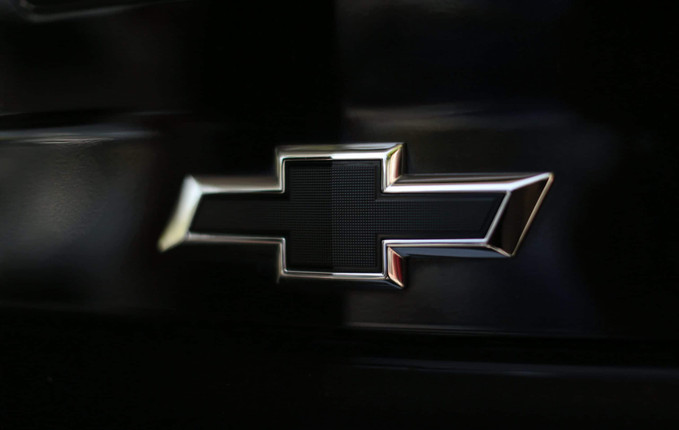All You Need To Know About the Turbo 350 Transmission
The Turbo 350 Transmission, often called the Hydramatic 350, is an iconic piece of automotive engineering with a storied history and a sterling reputation within the automotive world. Its legacy is built upon a combination of durability, performance, and versatility, making it a favorite among enthusiasts and mechanics alike. While it is known for its properties, you should select the one that suits your needs.
This blog will focus on the details and specifications of this iconic transmission, its benefits, and its common uses.
Here are some of the ideas you should know about the Turbo 350 transmission:
Introduction to the Turbo 350 Transmission
Many experts consider the Turbo 350 Transmission perfect for light trucks, rally races, and entry-level sports vehicles. This transmission's tough parts and high performance make it unique, which gives it the capacity to tackle several use cases. Gearstar, an industry leader, produces a range of Turbo 350 Performance Transmissions heavily backed by a full warranty.
Background
The Turbo 350 Transmission, known initially as the Hydramatic 350, emerged in 1969 as a collaboration between Chevrolet and Buick. Its primary goal was to replace the Super Turbine 300 2-speed Powerglide automatic transmission. This project also spawned other transmissions, such as the 250, 250c, 350c, and 375b GM transmissions.
Identifying the GM Turbo 350 Performance Transmission
When General Motors introduced the Turbo 350, it featured a one-piece aluminum alloy housing unit measuring 21.75 inches long and weighing approximately 120 lbs. Key identifiers of the Turbo 350 include a custom-made oil pan that fits seamlessly and a chamfer at the rear passenger side. Additionally, the modulator is located at the back of the case.
From 1979 to 1984, General Motors incorporated a lock-up torque converter in vehicles equipped with the Turbo 350 Transmission. This innovative converter utilized electronics to enhance fuel efficiency, especially during highway speeds. You can easily identify the presence of a lock-up converter by the electrical plug on the driver's side of the transmission. If there's a plug on the left side, you have a 350-C model.
Adding aftermarket conversions to these transmissions can yield up to 10 percent more fuel efficiency.
Specifications Of The Turbo 350 Performance Transmission
General Motors introduced the Turbo 350 Transmission to replace the Powerglide 2-speed automatics in the 1960s.
The Turbo 350 boasts the following gear ratios:
- First gear: 2.52 to 1
- Second gear: 1.52 to 1
- Third gear: direct drive, i.e., 1.0 to 1
- Reverse: 2.07 to 1
Notably, the Turbo 350 does not have an overdrive gear. In comparison, the Powerglide featured different gear ratios:
- First: 1.82-to-1 /1.76-to-1
- Second: 1.00-to-1
The Turbo 350 is known for its versatility, offering Level 2, Level 3, and Level 4 performance options. It can handle up to 700 horsepower and control as much as 400 lb-ft of torque. The power of your vehicle determines the level of transmission you need, with stronger engines requiring a minimum of a Level 3 transmission. Gearstar ensures that the transmission you choose is equipped with robust components and top-quality construction.
Structural Components Of The Turbo 350 Transmission
The Turbo 350 Transmission is a single-piece transmission with an integrated bell housing. Its casing is constructed from cast aluminum, contributing to its lightweight design. The Turbo 350 is known for its short length, making it one of the lightest transmissions ever produced. Typically, it requires around 4 quarts of oil in the pan, with some variations depending on the torque converter.
When coupled with a 9.5-inch converter, the total oil requirement increases to approximately 10 quarts. This transmission's compactness, strength, and versatility made it a preferred choice for a wide range of rear-wheel-drive vehicles, particularly those produced by General Motors.
Benefits Of The Turbo 350 Transmission
The Turbo 350 Transmission offers numerous benefits for drivers looking to enhance the performance of their vehicles. Whether you're new to motorsports or seeking to boost your daily driver's capabilities, the Turbo 350 is an excellent choice. Its most significant advantage over its predecessor, the Powerglide, is the additional gear it provides.
However, it's important to note that the Turbo 350 had one notable weakness – the wobbling of the direct clutch drum.
Common Uses of the Turbo 350 Transmission
The Turbo 350 Transmission found extensive use in various General Motors vehicles, including Pontiac Firebirds, GMC trucks, Chevrolet Camaros, Monte Carlo, and the Caprice. This transmission was an excellent match for GM automobiles equipped with small-block V-8s, small Iron Duke 4-cylinder models, big-block 396 V-8s, and V-6s.
An offshoot version of the Turbo 350, known as the BOP (Buick, Oldsmobile, and Pontiac), was designed to work with Pontiac V8 engines. You can easily distinguish between the two versions by examining the block flange – the BOP version has a valley. At the same time, the Chevrolet model features a peak.
General Motors also developed several derivatives of the Turbo 350, including models with lock-up torque converters, such as the TH375, TH 250, and TH20.
Conclusion
The Turbo 350 Transmission has left an indelible mark in the automotive industry. While it is no longer in production, its legacy remains in many classic and vintage vehicle builds. With additional gear, compact design, strength, and versatility, it remains popular among enthusiasts and restorers.
Footnotes
Whether you're looking to breathe new life into your classic muscle car or seeking a reliable transmission for your project, the Turbo 350 is a trusted companion that continues to deliver exceptional performance.




